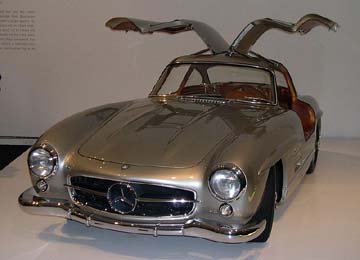

 The Accurate Reloading Forums
The Accurate Reloading Forums  THE ACCURATE RELOADING.COM FORUMS
THE ACCURATE RELOADING.COM FORUMS  Other Topics
Other Topics  Classic And Sports Cars
Classic And Sports Cars  PVC Oil/Air Separator
PVC Oil/Air SeparatorGo  | New  | Find  | Notify  | Tools  | Reply  |  |
| One of Us |
Recently, the subject of blow-by came up during a discussion on an achilles heel with the Ford Ecoboost engines. With the increasing EPA standards on both gas mileage and emissions, engine designers have resorted to thinner oils and less piston ring pressure along with power adders like turbos and superchargers. All of this has increased the amount of piston ring blow-by and the amount of combustion byproducts added to the oil system. Because of the EPA emission standards, we can no longer just vent this oil laden pressure to the atmosphere (well, legally that is). Anywho, so the PVC and regenerative combustion systems were born. Along with direct injected engines (as opposed to port injection) intake valves are no longer cleaned and cooled with the incoming air/fuel charge. But they are bathed in regenerative gases and oil laden PVC gases. As many owners are finding (especially with turbocharged engines) all this crap builds up on the backside of the inlet valve. This results in poor engine performance, increased fuel usage and poor emissions - the things the EPA was attempting to avoid. The problem of inlet valve fouling has become a huge issue and is killing a lot of top-ends resulting in some outrageous maintenance bills. There are many Ecoboost stories on the Internet to support the point. I am in the process of adding a supercharger on a 6.4 liter Jeep GC SRT - unfortunately I am still waiting on dyno tuning time. The issue of PVC and regenerative gases is a big issue with superchargers and turbos that don't like anything other than clean air. The problem this creates with power adders is the more oil vapor that enters the cylinders the octane rating of the fuel significantly drops to the point of detonation (knocking). This causes a loss of power as the ECU attempts to retard timing to stop the knock. Not desirable when you are trying to make more power. To address the problem, I started using JTL oil separators (jlttruecoldair.com) several years ago on other vehicles - both normally aspirated and blown. I am amazed how much oil it collects and what all that crap would be doing to the engine and blower as well as robbing power and gas mileage. On most applications it takes less than 20 minutes to install and costs between $120 - $200. The claim is that they can pay for themselves over time by increasing fuel efficiency. Since I do not drive to conserve fuel, I only like the idea that I am not losing engine power or causing top-end fouling that will require a lot of maintenance work. While I still use SeaFoam top end cleaner from time to time, cleaning the top end is time consuming process and adds to operational costs. You might want to look into adding one especially for any blown engine application whether petrol or diesel. Worth the money and will not void warranties and it might just save your engine and some bucks too. ___________________ Just Remember, We ALL Told You So. | ||
|
| Powered by Social Strata |
| Please Wait. Your request is being processed... |
|

Visit our on-line store for AR Memorabilia

